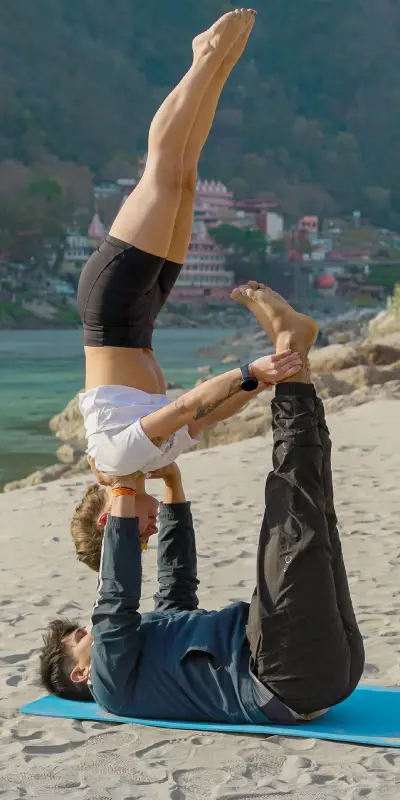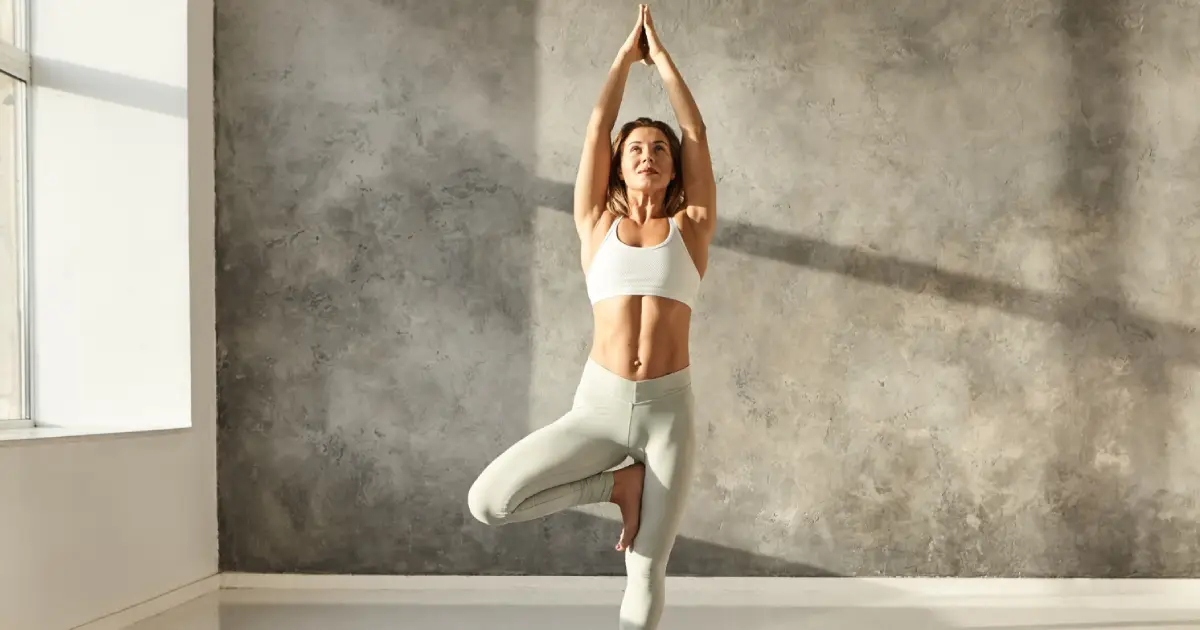
Get A Free Quote


Vrksasana, also known as Tree Pose, is a basic yoga posture that focuses on balance, stability, and grounding. The Sanskrit terms "Vrksa," which means tree, and "asana," which means pose, are the source of this asana. As the name implies, the pose imitates a tree's steady, rooted form, encouraging balance in both the body and mind and creating a sense of connection with the earth.
When performing Vrksasana, a person stands on one leg and presses the sole of the other foot against the inner thigh or calf of the leg they are standing on, pointing their toes downward. Usually, the hands are stretched overhead or gathered together at the chest in the position of prayer. Concentration and balance are improved during the pose when one maintains a steady gaze, or drishti, at a fixed point.
Vrksasana, pronounced as vrik-SHAH-sah-nah, finds its roots in the Sanskrit language, where "vrksa" translates to "tree." The essence of this yoga pose is reflected in its name, Vrksasana, which represents the steadiness, groundedness, and upward reach of a tree.
Yoga's standing postures include the balancing pose known as Vrksasana. It focuses mostly on the following areas:
For a comprehensive exploration of yoga postures and to delve into related practices, consider checking out the Complete Guide to Chakrasana.
Step 1: Initial Position Start out in the mountain pose, Tadasana. Stand tall, place your feet hip-width apart, and keep your arms by your sides.
Step 2: Adjusting Weight Place your left foot firmly on the ground as you shift your weight onto it.
Step 3: Lifting the Right Leg Place the sole of your right foot against your inner left thigh or calf as you slowly raise it off the ground. Steer clear of the knee joint.
Step 4: Locate a Focal Point, or Drishti To help with balance and concentration, pick a point in front of you to concentrate on.
Step 5: Lift your hands in a prayer For an added challenge, place your palms together in a prayer position at your chest or out in front of you.
Toe Pose, or Padangusthasana, is an excellent pose to practice before Vrksasana. It stretches the hamstrings, inner thighs, and outer hips, which can help to improve the range of motion needed for Vrksasana. More on this here
Consider yoga's Tree Pose to be similar to developing a solid business. Businesses flourish when they have a strong and durable structure, just as Vrksasana requires a strong foundation. Maintaining equilibrium in business requires balancing priorities and skillfully navigating challenges, just like finding balance on a mat.
The mindfulness needed in making business decisions is similar to the focused concentration needed in Vrksasana. Individuals who practice physical balance also develop mental clarity, which is an important skill that helps them make well-informed decisions in the workplace.
Tree Pose trains practitioners to soar to new heights while maintaining their grounding. In the same way, growth and innovation are made possible in business by a solid foundation. Learning balance on the mat helps people develop a stable mindset that can help them in their professional endeavors by encouraging resilience and adaptability.
Make Tree Pose (Vrksasana) a regular yoga practice. Begin your practice in Tadasana and then move into Tree Pose. Concentrate on your breathing, find your balance, and hold the pose for as long as you feel comfortable. Repeat on the other side. This simple addition promotes physical and mental stability.
Never forget that balance involves more than one pose. Use counter-poses to keep your balance, such as forward folds or mild twists. Discover the balancing benefits of Eagle Pose, or Garudasana, which is an ideal pose to practice after Tree Pose. It's a beautiful dance of strength and flexibility.
Vrksasana is a gift to your body and mind; include it in your routine for more benefits than just flexibility. The advantages extend beyond the mat, providing stability and clarity that are essential for business professionals. As you stand tall in Tree Pose, imagine yourself rooted in strength and reaching for new heights.

Posted: 10 December, 2023
Renowned for his expertise in yoga and its philosophy, Sajan Negi brings over 15 years of experience in guiding individuals on their transformative journey towards holistic well-being. With a Master’s degree in Yoga and a life dedicated to personal growth, Sajan Negi combines ancient wisdom with modern insights to inspire physical strength, mental clarity, and spiritual peace in his students.